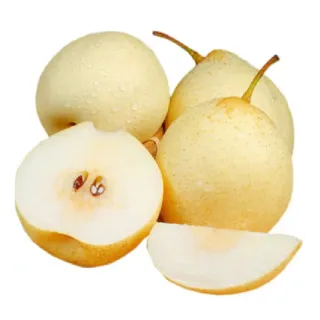Asian Pear Vs Pear: What Is The Difference
Pears are beloved fruits enjoyed worldwide for their juicy sweetness and versatility in culinary applications. However, within the realm of pears, there exists a distinct variety known as the Asian pear, which offers its unique characteristics and flavors.
Physical Characteristics:
Traditional pears, commonly referred to as European pears or Pyrus communis, typically have a rounded or bell-like shape with a slightly elongated neck. They come in various colors, including green, yellow, and red, and may have smooth or slightly textured skin.
Asian pears, also known as Pyrus pyrifolia or apple pears, have a round, apple-like shape with a crisp and crunchy texture. They often have a golden-yellow or russet-brown skin, sometimes with speckles or patches.
Flavor Profile:
Traditional pears are renowned for their sweet and fragrant flavor, with subtle notes of floral and citrus undertones. They have a soft and buttery texture when ripe, making them ideal for eating fresh or incorporating into desserts and salads.
Asian pears offer a unique taste experience characterized by their crisp and refreshing texture. They are often described as having a juicy and watermelon-like flavor, with a subtle sweetness and mild acidity. Their crunchy texture makes them suitable for snacking or adding a crunchy element to salads and dishes.
Related links:
Is Pear Good For Diabetes? Let's Find Out - HealthifyMe
How to Soothe a Teething Baby?
Role of Cooling Tower Air Inlet Louvers
What is galvanized water tank for well and Why Do We Use Them?
How Will 8 Shafts Revolutionize Tape Production?
How to Select EPS Pre-Expander Care?
Maximize Battery Life: Top Tips for Lithium Ion 32140 CellsTexture and Ripeness:
Traditional pears are typically softer and juicier when ripe, with a delicate flesh that melts in the mouth. They undergo a ripening process where they become increasingly tender and develop a more pronounced sweetness.
Asian pears maintain their firm and crunchy texture even when fully ripe, offering a refreshing and crisp bite. They are harvested when mature and do not undergo significant softening during the ripening process, making them ideal for longer storage periods.
Culinary Uses:
Traditional pears are versatile fruits commonly used in both sweet and savory dishes, including pies, tarts, jams, chutneys, salads, and even roasted or grilled as a side dish.
Asian pears are often enjoyed fresh as a snack or incorporated into salads for their crunchy texture and subtle sweetness. They can also be sliced and served with cheese, added to stir-fries, or used in desserts such as pies and crisps.
While both traditional pears and Asian pears belong to the same fruit family, they offer distinct flavors, textures, and culinary uses. Whether you prefer the soft sweetness of traditional pears or the crisp crunch of Asian pears, both varieties add delightful flavors and textures to a wide range of dishes, making them beloved fruits in their own right.
Pump vs. Valve Solutions: Choosing the Best for Your Needs
The Advantages of Utilizing Label Printing Equipment Components
Essential Tape Converting Machinery Parts You Need
How do long cycle life Li-ion batteries perform?
How Long Cycle Life Li-Ion Batteries Improve Performance?
What is the difference between a vapor barrier and a waterproof membrane?
Key Questions to Ask When Ordering Gravel Sand Pump Manufacturer












